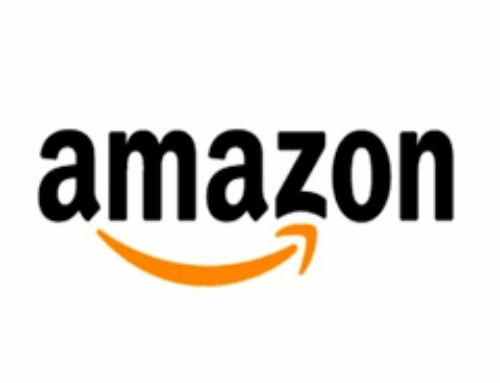The move by the Trump administration to lower tariffs on goods from China to 30% from 120%, still offers limited reprieve for US small businesses, who remain cautious as tariffs are still sky high by historical levels and are also pressuring profits.
Small businesses remain wary: Existing orders can be shipped from China within the 90-day window, but it’s not enough time to receive new orders.
“Small businesses that import from China will still take a beating,” said Heidi Crebo-Rediker, a senior fellow at the Council on Foreign Relations and a former State Department official. “This is still a huge nightmare to navigate,” she added, per Bloomberg.
On Monday, a White House executive order slashed the “de minimis” tariff on China shipments to 54% from 120%, with a $100 flat fee.
It served as the latest in a broad thawing of trade-war tensions between the US and China, after the two powers paused most tariffs for 90 days and sent markets into euphoria.
“The consensus from both delegations this weekend is neither side wants a decoupling,” US Treasury Secretary Scott Bessent said on Monday. “And what had occurred with these very high tariffs … was the equivalent of an embargo, and neither side wants that. We do want trade.”
Also on Tuesday, it was reported that China has lifted its ban on Boeing (BA) plane deliveries.
Meanwhile, President Trump’s Middle East visit has opened the door for Saudi Arabia and the UAE to push ahead with their AI ambitions, with Big Tech firms like Nvidia (NVDA) and Advanced Micro Devices (AMD) set to supply advanced chips.
Despite these deals, the world’s largest contract electronics maker, Foxconn (HNHAF, 2317.TW) downgraded its full year outlook on Wednesday due to tariff uncertainty.
Broader optimism for a comprehensive shift in US policy grew last week as Trump announced a trade deal with the UK, the first for his administration since imposing — then pausing — sweeping “reciprocal” tariffs against all trading partners in early April.
Meanwhile, US negotiations with the UK’s neighbors in the EU have taken a different tone, with the EU on Thursday unveiling a list of US products it will target with tariffs in the event trade negotiations fail.
Here are the latest updates as the policy reverberates around the world.
LIVE 877 updates
-
Yahoo Finance’s senior reporter Hamza Shaban looks at the afterglow of the tariff truce between the US and China in Wednesday’s Morning Brief. It’s a pause for 90-days, but what should you watch out for now both sides seem to standing down – for now.
Read more here.
-
-
The burden of US tariffs have taken its toll on entertainment company Sony (SONY), wiping out any expectation of an increase in the group’s operating profit.
Bloomberg News reports:
Read more here.
-
-
Analysts are seeing a clear winner when it comes to the easing of trade relations between the US and China. Yahoo Finance’s Madison Mills looks into why Big Tech giant Nvidia (NVDA) may come out on top now that trade has eased between two of the worlds largest economies.
-
US soybean exports may drop 20% and the prices paid to farmers will fall if the US and China fail to reach a trade agreement which has been limiting US soybeans from their largest market, according to research released on Wednesday from agribuisness consultants, AgResource.
Reuters reports:
Read more here.
-
Today’s Consumer Price Index (CPI) report showed auto prices were unchanged in April from the previous month despite the 25% tariffs on foreign-made cars that began on April 3.
Car buyers may have dealers to thank for not upping the sticker price on a new set of wheels.
Yahoo Finance’s Pras Subramanian reports:
Read more here.
-
Xi Jinping has backed Panama against US pressure over control of its ports and pledged stronger ties with Latin America, as China steps up efforts to expand influence in America’s backyard.
FT reports:
Read more here.
-
-
Financial leaders traveling with President Trump to Saudi Arabia noted that investors may be waiting for more trade certainty before they hop back into private markets.
Yahoo Finance’s David Hollerith reports:
Read more here.
-
The US has confirmed that its 10% universal tariff on imported goods will stay in place — for now. Trade Representative Jamieson Greer said talks are ongoing with countries like China, the UK, and Switzerland to ease some of the extra Trump-era tariffs.
Reuters reports:
Read more here.
-
China’s finance ministry said its 90-day pause on retaliatory tariffs on US goods will begin Wednesday, May 14, at 12:01 p.m. ET.
Reuters reports that the ministry will reduce the 34% duties on US imports to 10%. Those duties were first implemented on April 4 in response to President Trump’s “Liberation Day” tariff program.
The ministry also said it would cancel the additional 91% rate in two later rounds of measures.
“The significant reduction in bilateral tariffs between China and U.S. aligns with expectations of producers and consumers in both countries, and is conducive to economic and trade exchanges between China and the U.S. and to the global economy,” a statement said.
Read more here.
-
Yahoo Finance’s Josh Schafer reports:
Read more here.
-
-
Yahoo Finance’s Josh Schafer reports:
April’s Consumer Price Index (CPI) is expected to show the first clear signs of inflationary impacts from President Trump’s tariffs.
The report, set for release at 8:30 a.m. ET on Tuesday, will greet investors less than 24 hours after markets soared on news the US and China have placed a 90-day pause on a wide swath of tariffs between the two countries.
“We expect the first signs of tariff related inflation to show up in the April CPI released on Tuesday,” UBS chief economist Jonathan Pingle wrote in a note to clients on Monday. …
In the CPI report, headline annual inflation is forecast to come in at 2.4% in April, flat from March’s increase. On a month-over-month basis, prices are estimated to rise 0.3%, above the 0.1% decline seen in March.
On a “core” basis, which strips out the more volatile food and energy costs, CPI is expected to have risen 2.8% over the past year in April, unchanged from the month prior when core inflation hit its lowest level in four years. Meanwhile, monthly core price increases are anticipated to rise 0.3%, ahead of March’s 0.1% rise.
While there will be signs of tariff-related inflation in Tuesday’s report, economists argue the full brunt of the new policies’ impact on inflation likely won’t be seen for several months.
Read more here.
-
-
Honda (HMC) is facing a $3 billion profit hit due to US tariffs, lowering its profit forecast for the upcoming year. The company is also grappling with slow electric vehicle growth, making future projections difficult.
Nissan (NSANY), in a similar situation, is slashing 15% of its workforce, about 20,000 jobs, and reducing its plants from 17 to 10 as part of its recovery plan. This comes after a significant loss for the past fiscal year, exacerbated by the US tariffs.
Both automakers are under pressure from rising costs and weak sales, with Honda considering increased US production and Nissan focusing on cost cuts to regain profitability.
The tariffs’ impact is widespread, with GM (GM), Ford (F) and Toyota (TM, 7203.T) also reporting profit declines. Both companies are adapting their strategies to cope with the ongoing trade challenges.
-
President Donald Trump has reduced the tariff on small packages sent from mainland China and Hong Kong to the US, following an agreement between the world’s two largest economies to lower tariffs on each other’s goods for 90 days.
The tariff on parcels valued up to $800 has been lowered from 120% to 54%, according to a White House statement.
A White House executive order said on Monday that the US would cut the “de minimis” tariff on China shipments to 54% from 120%, with a flat fee of $100 to remain starting from May 14.
“I also deem it necessary and appropriate to: (a) decrease the ad valorem rate of duty… from 120 to 54%,” President Trump said in the statement.
-
India is weighing whether to slap import duties on certain US-made products in response to Washington’s tariffs on steel and aluminium, according to a document submitted to the World Trade Organization (WTO).
Reuters reports:
Read more here.
-
China has lifted its restriction on airlines receiving Boeing (BA) planes, Bloomberg News reported Tuesday, citing sources with knowledge of the situation.
Reuters reports:
Read more here.





